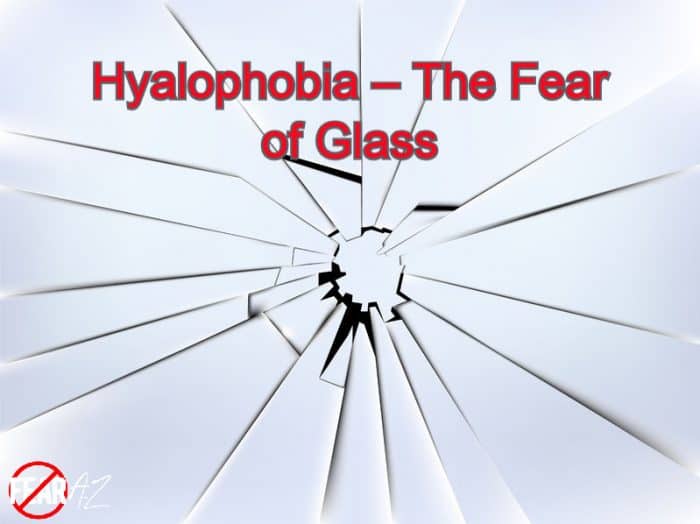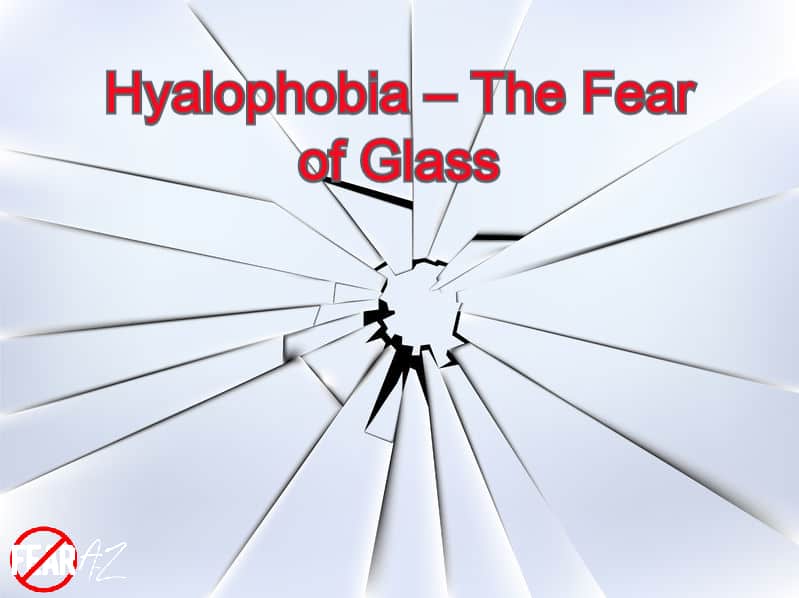Share This Article
Understanding Hyalophobia – The Fear of Glass
Does the mere sight of glass cause you to feel cold and numb all over?
Would you rather have champagne in a paper cup than touch a slender glass flute?
Do buildings made of glass send chills down your spine?
If the answer is yes, you likely have hyalophobia.
Hyalophobia, or the fear of glass, can be an overwhelming and stressful experience. People around you may raise eyebrows and be confused with the sudden irrational panic you experience.
All you know is the mere sight of glass, and the idea of being close to glass, causes your heart to pound as if you have run a marathon. You can’t explain the panic that grips you, making it hard to breathe and think rationally.
Having to live with this fear is a constant battle and one that you always end up losing. You feel anxious even talking about it because you can’t understand it yourself. Besides, people can be unforgiving and quick to judge, adding to your anxiety.
But for those with phobias, the fear is also unforgiving and a considerable part of their existence.
You are not alone, and you don’t need to permanently live with unwanted terror. You can manage your distress, and the first step is to have a better understanding of what may have caused it.

What Causes the Fear of Glass?
Your fear of glass may have rooted when you were younger—a memory you might have already forgotten. Perhaps glass shattered, and you were in close proximity when it happened. Or maybe you were the one who broke the glass and got a good scolding for it. Maybe you were involved in a traumatic accident where glass was involved.
Movies that you have watched and real-life situations you’ve witnessed that put glass in a negative light can also attribute to your fear. You might have even injured yourself when you were younger courtesy of some glass shards.
Other contributing hyalophobia causes could be witnessing someone pushed out a window, a car accident or explosion where the windows shattered, hail pummeling your windshield while driving, or even people throwing objects made of glass.
Everything You Need to Know about Hyalophobia
You might be surprised to learn there is actually a name for what you’re going through. The term for your fear is hyalophobia. Hyalophobia is also referred to as hyelophobia, nelophobia, and in some cases crystallophobia. It is an example of a specific phobia and is associated with the fear of glass or the fear of broken glass.
A terrifying aspect of any glass structure is its delicateness. Despite glass structures being a solid material, glass is still best described to be highly fragile. And once it breaks, the slivers and spikes can cause pain and injury.
Most people who have hyalophobia fear more than glass windows and imposing glass structures. A mere shot glass or even a delicate chess piece made of glass may trigger their fear.
Like most phobias, hyaphobia can also stem from learned behavior. If you grew up with someone who also feared glass, then the possibility of this fear being instilled in you is high. It becomes a norm that glass is meant to elicit anxiety and panic. You grow up with this idea, and as you age, the fear escalates.
Hyalophobia can cover anything that’s glass-related. For example, you may avoid entering a building primarily made of glass. Or you might refuse to go to a vineyard because you know wine-tasting would include glass goblets. At home, you might have melamine, plastic, or wooden glasses and kitchenware.
Symptoms of Hyalophobia
The symptoms of hyalophobia are similar to most other phobias. However, there are no unique symptoms that would pinpoint your fear of glass beyond the presence of glass.
Additionally, the extent of the symptoms is unique for each person. For example, some may feel panicked when they come too close to imposing glass structures. On the other hand, in severe circumstances, the mere possibility of seeing a glass figurine is enough to some into a panic attack.
Physical Symptoms
- Chills and hot flashes
- Choking sensation
- Confusion
- Difficulty in breathing
- Dizziness
- Dry mouth
- Headache
- Hyperventilation
- Nausea
- Numbness
- Ringing in your ears
- A rise in blood temperature
- Sweating
- Tachycardia or rapid heartbeat
- The uncontrollable need to go to the bathroom
Mental/Emotional Symptoms
- Anxiety
- Fear of getting hurt
- Fear of dying
- Fear of losing control
- Guilt
- Irritability
- Mood swings
- Poor concentration
- Self-blame
- Shame
- Withdrawal from other people
Hyalophobics may experience one or a combination of these symptoms. Most mental and emotional symptoms have a lingering effect which can be draining and unpleasant.
How Do You Deal with Hyalophobia?
You know deep inside that your phobia of broken glass is irrational, but your terror gets the best of you. All phobias should be taken seriously, especially if it stops you from being the best version of yourself. If your fear affects your relationships and prevents you from doing what you love, you owe it to yourself to seek professional help.
True, there is no one dedicated treatment for glass phobia, but several options exist.
Self-Help: What Can You Do to Help Yourself?
Nobody knows you better than yourself. Despite not fully understanding what’s happening, you can use your previous panic attacks to determine what triggers your phobia, then learn how to manage it.
Always remind yourself there’s nothing to be afraid of and your fear is illogical. Then, when you determine you’re ready to deal with that fear, you can start changing the way your mind thinks.
Make it part of your self-affirmations and believe in it. Assure yourself that with your strength, your fear can no longer control you.
Assess Yourself: How Were You Handling Your Fear?
Be honest with yourself and create a list of things that trigger your phobia and what you usually do to handle it. Then, indicate what worked and cross off those that were not effective in putting you back in control.
This list can be your starting point. It will help you be more confident in handling your emotions.
Relaxation and Calming Techniques
When you feel like your phobia is creeping in, calm yourself by engaging in breathing exercises, yoga, or meditation. When you have a calm mind, you can think rationally. You can remind yourself that, again, your fear is irrational and there is nothing to be afraid of.
Embrace Your Fear
Start with the smallest glass piece you can tolerate and learn to coexist with that tiny representation of your fear. Then, gradually adjust to larger glass items. Manage your daily life knowing that you’ll be drinking from a glass at dinner.
Professional Help for Fear of Glass
Sometimes, enlisting the help of professionals can provide the guidance you need in handling your fear of glass. Their experience and treatment options may prove to be exactly what you need to manage your hyalophobia.
A mental health professional might recommend a single hyalophobia treatment or a combination of options. Don’t worry. Your health professional will discuss these options, what to expect, and what the next steps are for each treatment.
- Talk therapies
- Hypnotherapy
- Neuro linguistic programming
- Cognitive behavioral therapy (CBT)
- Medication
Learning to Live with Hyalophobia
Unfortunately, no single treatment option is a one-size-fits-all approach. It will take time to fully and confidently manage your fears. Still, you will come to realize that by tapping resources and empowering yourself, you can reduce the anxiety and terror you feel.
Your fear of shattered glass doesn’t define you as a person. It should not limit you from what you can become. This is where asking for help and support from family and friends is important, because this is a complex undertaking.
Expect setbacks. This journey takes time, but you will emerge as a stronger individual with more confidence in yourself and less fear of glass.
In Conclusion
Being stronger than your fear can positively impact your life, and only you can do it. Work hard to manage your hyalophobia, so you can look forward to the day when the natural light kisses your face as you stand at your patio window.



